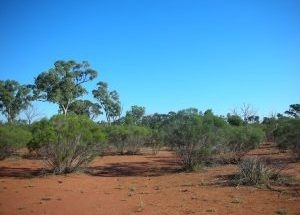Apr 5 2019
The multiple aspects of vegetable biodiversity in 123 arid and semi-arid ecosystems around the world have been explored by a Spanish and French team of scientists, including Universidad de Alicante (UA) researcher Santiago Soliveres, members of the Universidad Rey Juan Carlos, the National Agronomy Research Institute of France (INRA), and the Spanish National Research Council.
 (Image credit: RUVID)
(Image credit: RUVID)
The outcomes, which appear in an article published in the Proceedings of the National Academy of Sciences USA (PNAS) journal demonstrate the significance of species with limited presence and their evolutive history to maintain productivity and land fertility in dry regions across the planet.
The species of plants that can live in any specified region are influenced by the environmental conditions. For instance, if there is a large number of herbivores, the plants will grow thorns to protect themselves. If rain is limited, such as in several Iberian settings, they will develop thick and small leaves or storks that store water. If there is snow, a flat and round shape will help them manage the additional weight they will have to bear.
This range of functional adaptations or characteristics are part of biodiversity; however, they are not the only one. The taxonomic variety or number of species is the most widely employed measurement and a good indicator of how ecosystems vary and what effects can be predicted for the future. Furthermore, their evolutive history, or the thousands of years of evolution that the plants have, is valuable. It is an indicator of acclimatization to past climates as well as of the introduction of mutual relations or co-evolution with enemies like herbivores and pathogens.
We knew all these features of biodiversity were important for the functioning of ecosystems, but their effects as a whole had never been studied. This is important, as these different features are not necessarily related to one another, nor will they respond the same way to climate change. Therefore, we must know their role as a whole and not independently, in order to better predict the consequences these changes will have on diversity. This is the first time that evolutive diversity is studied as a whole. In other words, how many millions of years have been accumulated, the diversity of functional features, which marks what shape the parts of the plant will take, and the taxonomic diversity or number of species.
Santiago Solveres Codina, Study Co-Author and Researcher, Department of Ecology, University of Arizona.
Less Abundant Species
Researchers have explored ecosystems as diverse as rosemary-based fields or Iberian grass steppes, Australian and African savannahs, and pampas in Patagonia. In all of them, researchers evaluated different variables such as the contents of organic matter in the soil, the recycling of nutrients, or the productivity of its vegetation, which determine the cycles of the three most vital components for life, which are nitrogen, carbon, and phosphorus.
This study reveals that apart from the number of species, the less abundant species and their evolutive diversity also play vital roles in maintaining the functioning of arid ecosystems.
“Curiously, the functional features of the dominant species were the ones which determine each function on their own, but their effects have different signs in each of the main nutrients. In other words, no dominant species can maintain high levels of all the functions at the same time, regardless of the environmental conditions. That is where the group of less common species comes into play, as these are able to carry out multiple functions, and our study reveals that it is mainly the evolutive component of their biodiversity that determines this capability,” says Soliveres Codina. The loss of biodiversity that is experienced directly jeopardizes the potentials of ecosystems that are vital for human survival and well-being.
Therefore, our research can help define better biodiversity preservation and management programmes, as well as helping to choose with which species to restore degraded ecosystems.
Yoann LeBagousse-Pinguet, Study Coordinator and Researcher, Universidad Rey Juan Carlos.
“In ecological restoration, this guides what species to use in each case, it helps managers to know what species of families to place,” described the UA scientists.
The global sampling conducted for this study, which was distinctive across the world, is within the framework of the BIOCOM project, led by URJC Ecology professor Fernando T. Maestre, which has the support of the Starting Grants programme of the European Research Commission (ERC).